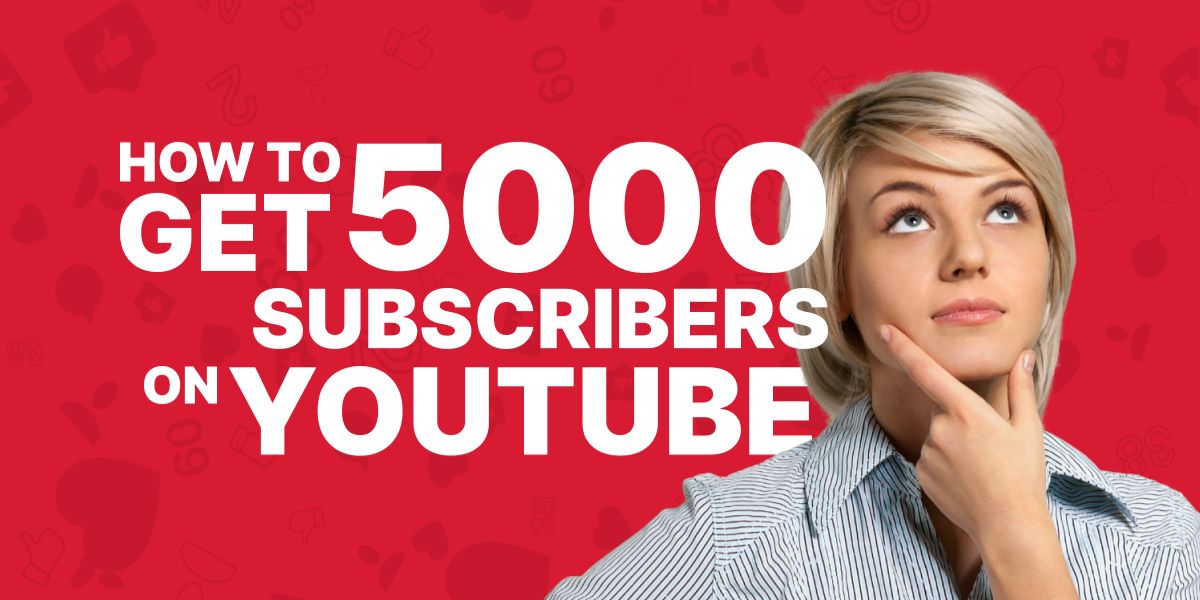youtube video seo: Both inside and outside of YouTube, you can make your videos more search engine-friendly. Particularly popular and widely used internet search engine in the entire world is Google. However, YouTube is in second place, closely followed by Google. Your video appears in YouTube’s search results or recommendations when you use the correct YouTube Video SEO.
YouTube Description
Additionally, Google Search may display your own videos referred to as short clips. A video clip is a thumbnail search result. Videos for specific keywords appear above on the first page of Google. Utilizing the power of your video’s text through documents, closed captions, and subtitles is a crucial part of YouTube Video SEO.
Important Considerations That Influence YouTube Video Ranking

As previously said, the system is continuously changing; by using a YouTube Video SEO tool, you can remain on top and analyze your performance. These tools can assist you optimize the videos you create. But what are some of the significant YouTube ranking factors to consider? To be honest, no one knows for sure. Many professionals think that numerous if not thousands or millions of criteria influence your YouTube rating. According to the statistics, there are five aspects that you should certainly consider.
1. YouTube Watch Time | YouTube Video SEO
The watch time indicates the total amount of time viewers spend watching a YouTube video. Viewers who watch films for as many minutes as possible result in a high view time, which benefits the algorithm and raises the video’s ranking. Remember that YouTube’s primary objective is to retain viewers on the platform for as long as feasible. A high rating will be awarded to all videos that contribute to the achievement of a high Watch Time. The YouTube Analytics feature allows you to view the statistics instantly.
2. Engagement of the Viewer
This performance metric calculates the average duration of video viewing. Measuring viewer’s engagement can be done in two different ways:
★ Similar audience retention
★ Complete audience retention
The percentage of the video that is typically viewed is indicated by relative audience retention. On the other hand, overall viewer retention reflects the average number of minutes spent watching the video. One could argue that lengthy clips are superior to fewer in length in this regard, but keep in mind that the content of the video is what counts in the end.
3. YouTube Click-Through-Rate | YouTube Video SEO
The percentage of users that click on the video at all after finding it through a search is indicated by the CTR. When a video’s thumbnail and title show up in search results or recommendations, the algorithm can determine how important the video is for the viewer. You should consider a solid title and a designed effective thumbnail to improve the click-through rate.
4. Regularity of Uploads | keywords on youtube
This feature is quite beneficial to a YouTube channel that publishes videos on a regular basis. The regularity of video uploads to a channel is indicated by the upload frequency. YouTube search engine optimization benefits from a channel that is more active and has more uploaded videos. This creates a solid foundation for a high YouTube rating.
5. Duration of the Video
YouTube wants you to use their site for as many years as possible. The length of time people spend on YouTube following a video viewing is indicated by the video duration. The YouTube algorithm benefits from extended video durations.
How to Find Relevant Keywords for YouTube SEO

Several of the following techniques can be used to discover keywords for YouTube videos:
- Make Use of YouTube Keyword Research Resources
- View the Study Analysis on YouTube Analytics
- Utilize the Autocomplete feature on YouTube.
- Examine the Videos of Your Rivals
- Evaluate Your Keywords’ Search Intent
- Make a Map of Keywords
1. Make Use of YouTube Keyword Research Resources
You can see what your target audience searches for on YouTube by using YouTube keyword research tools. And provide you with information on the keywords that are most probable to generate views and interaction. You may find out how many times a keyword is searched for using the Keyword Analytics for YouTube app. Additionally, such keywords are highly productive.
2. View the Research Report on YouTube Analytics
YouTube Analytics’ Research page displays a list of frequently searched phrases used by your audience.
- Go to “Analytics” then “Research” after logging into YouTube Studio to utilize the feature.
- Following that, select the tab labelled “Your viewers’ searches.”
To display related keywords that your viewers have used over the past 28 days, type a search phrase. Either “High,” “Medium,” or “Low” will be displayed for the “Search volume on YouTube”.
Keep an eye out for YouTube search keywords that have the “Content Gap” tag attached. This indicates that the user had trouble locating a video that met their requirements. One of the best ways to increase views and subscriptions would be to fill up this information shortage. Utilize the “Searches across YouTube” page instead for more comprehensive information. Additionally, you can add any search term to your “Saved” tab by clicking the bookmark button.
3. Utilize the Autocomplete function on YouTube
Trending searches that are related to the one you are entering are served by YouTube’s autocomplete feature. It is a simple way to identify good YouTube keywords for your videos. In the YouTube search field, type in a topic that is relevant to your channel or that you want to create videos about. The autocomplete feature on YouTube will then display several versions of your query.
Make a note of the appropriate YouTube search phrases that appear in the autocomplete box. Additionally, create videos that focus on those keywords. Practice with other subjects and concepts. You’ll get dozens of fantastic video concepts for your channel in no time.
4. Examine the Videos of Your Rivals
There will undoubtedly be rivals in your niche that can provide you with excellent ideas for your YouTube videos.
Pull up some of your competitors’ videos and take note of the following:
- Which keywords they use in their video titles and descriptions
- Whether they use any keyword variations
- How they use keyword variations
While you should never copy your competitors’ content, analysing that content can show you what it’ll take to get more views on your videos. By investigating the keywords that your rivals use as tags, you can enhance the scope of your research. Usually, tags don’t have much of an effect on search results. Still, a lot of YouTubers use them to improve the ranking of their videos. Play a rival’s video to see what keywords your rivals are using as tags.
5. Evaluate Your Keywords’ Search Intent
One of the biggest search engines is YouTube. Additionally, YouTube, like Google, Bing, and Yahoo, wants to make sure that when consumers search for anything, they see the content they want to see. This brings us to search intent.
What a person hopes to find when searching for a keyword is known as search intent. Additionally, a video must have the correct search intent in order to score highly in YouTube’s search results. Entering every keyword into the YouTube search bar is the best method to find the search intent for your terms. to observe current trends.
Just enter the keyword into YouTube if it’s confusing. To determine the type of content someone is searching for, pay attention to the titles, descriptions, content, and thumbnails of the videos that score highly.
Where a person is in the marketing funnel can also be explained by their search intent. Additionally, every keyword has a matching section in the funnel.
The four categories of keywords and the four phases of the marketing funnel that correlate to them are:
- Interest: The purpose of the search intent is clear.
- Action: The goal of the search is to buy something.
- Desire: Information about a potential purchase provides search intent.
- Knowledge: The goal of a search is to find out more about an item.
6. Create a Keyword Map
Make a keyword map using the YouTube keywords you have researched. Connecting particular keywords with content—in this case, YouTube videos—is known as keyword mapping.
The procedure entails creating a spreadsheet or chart with your top keywords and the particular videos that will most effectively utilise them.
The following components can be included in your YouTube keyword map:
- An essential keyword list for your channel
- Quantities of monthly keyword searches
- The purpose of the search or every one of your keywords
- The URLs of your YouTube videos that focus on each term
- The present search ranking of each video for the associated term
- The level of rivalry for every keyword
Videos can be optimised for a variety of keywords. However, you shouldn’t optimise the same keyword in more than one video.
Monitoring YouTube Analytics and Enhancing Your SEO Activities

1. Improve the Titles and Descriptions of Videos
When it comes to search engine optimization, your video titles and descriptions are quite important. By determining the terms and phrases that bring in the most views to your videos, you can use YouTube Analytics to improve your SEO. To raise your search engine ranks, include these keywords in your titles and descriptions. Ensure that your titles are concise and evocative and that your descriptions contain appropriate search terms and offer helpful details.
2. Make Captivating Thumbnails
The first thing people see when they find your videos are the thumbnails. To find out which thumbnails have the most click-throughs, use YouTube Analytics. Make captivating thumbnails that faithfully capture your content to increase traffic and improve your search engine optimisation. To make your thumbnails stick out, think about utilising vivid colours, crisp photos, and easily accessible language.
3. Analyze Viewer Behavior
YouTube Analytics offers information on audience retention and average watch time, among other aspects of viewer behaviour. Utilise this information to pinpoint the moments when viewers lose interest and make necessary corrections to maintain their interest. You may increase your watch time and SEO by keeping viewers on your page lengthier. To keep viewers interested, you could choose to shorten or alter your video if you see a noticeable decline in viewership at a certain point.
4. Track Engagement Signals
The success of your material is mostly determined by engagement metrics like likes, comments, and shares. By monitoring these variables and encouraging people to engage with your videos, you can use YouTube Analytics to improve your SEO. Ask questions, reply to comments, and produce content that encourages engagement. Improved visibility and improved search rankings are the results of increased involvement.
5. Make Use of Cards and End Screens
Tools like end screens and cards can help fans stay on your channel for longer. To determine what end screens and cards are best at encouraging people’s behaviour, use YouTube Analytics. You can boost watch time and SEO by highlighting other videos, playlists, or channels. Make sure your audience will find the stuff you link fascinating and useful.
Summary
Analysing the data is only one aspect of using YouTube Analytics to Improve Your SEO; another is using those insights to produce better, more interesting content. You may reach a larger audience, accomplish your content objectives, and continuously enhance the effectiveness of your channel by remaining attentive and knowledgeable. Cheers to your analysis and optimisation!
This brings an end to our in-depth tutorial on leveraging YouTube Analytics to improve your SEO. You’ll be successful in your way to building a popular YouTube channel that attracts people and performs more highly in search results if you adhere to these pointers and tactics. I wish you luck!






